Our database keeps a variety of dimensions for all the truck types listed on Big Truck Guide. Sometimes, these can be confusing and the best way to see which dimensions mean what is to see them on a schematic of a truck.
Some dimensions are specific to particular truck types, and some dimension limits are common across all trucks. Sometimes different states call the same dimension limits differently. The following is the terminology adopted by Big Truck Guide that is used commonly across US states and Canadian Provinces.
Common Straight Truck Dimensions
Many jurisdictions govern the front overhang and rear overhang distances based on the type of load, for instance US Federal Regulations specify maximum limits for auto carriers for these distances. Big Truck Guide keeps a record of these dimensions for general loads. Also important to note is that the ‘effective rear overhang’ distance is measured to the end of the vehicle or load.
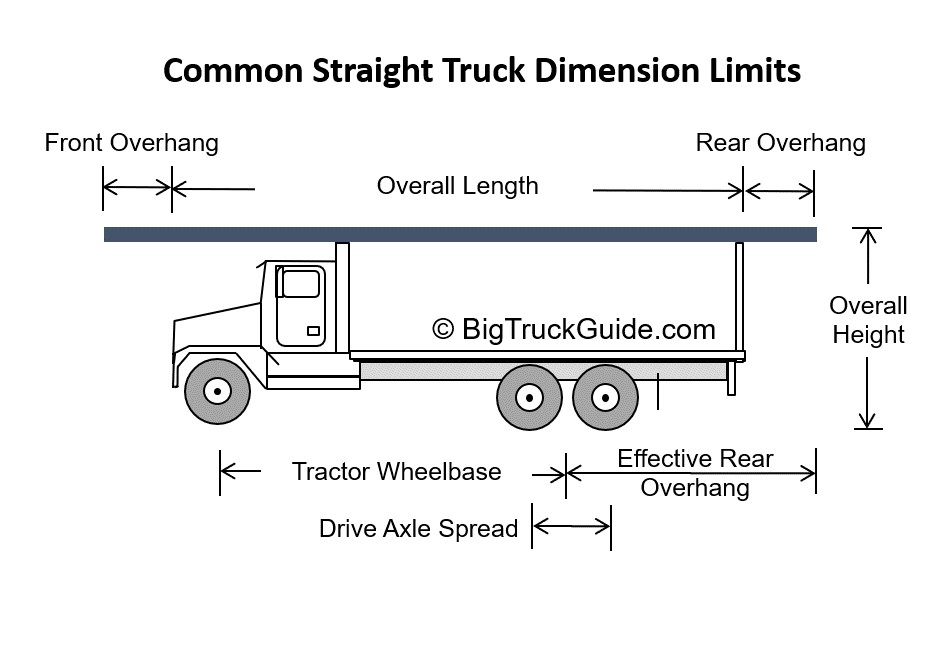
Common Semi Truck Dimensions
Not all the dimensions listed here are listed for all jurisdictions, but only as needed. But adding all jurisdictions together gives an idea how many restrictions exist on one truck.
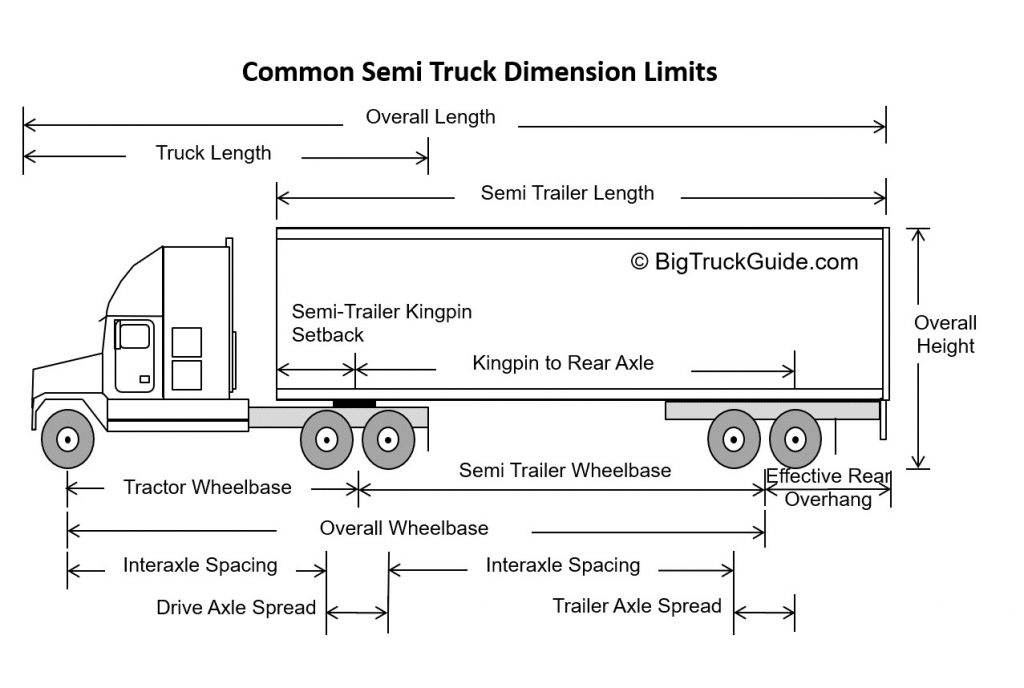
Dimensions specific to B Trains
B-Trains are a common combination in Canada and many US states, and there exist some specific dimension restrictions just for this type of combination.
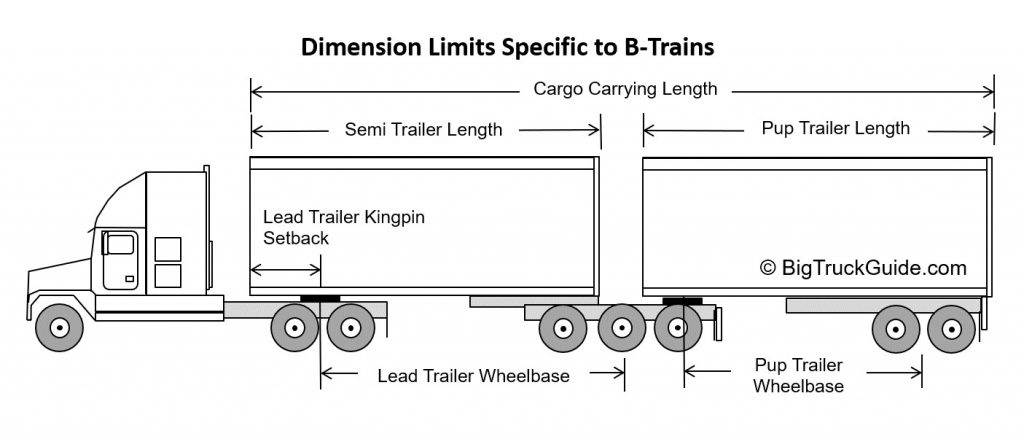
Dimensions specific to A Trains
A and C Trains have restrictions that are similar to B-Trains, but some jurisdictions have additional restrictions on the distances around the end of the lead trailer and the start of the pup trailer.
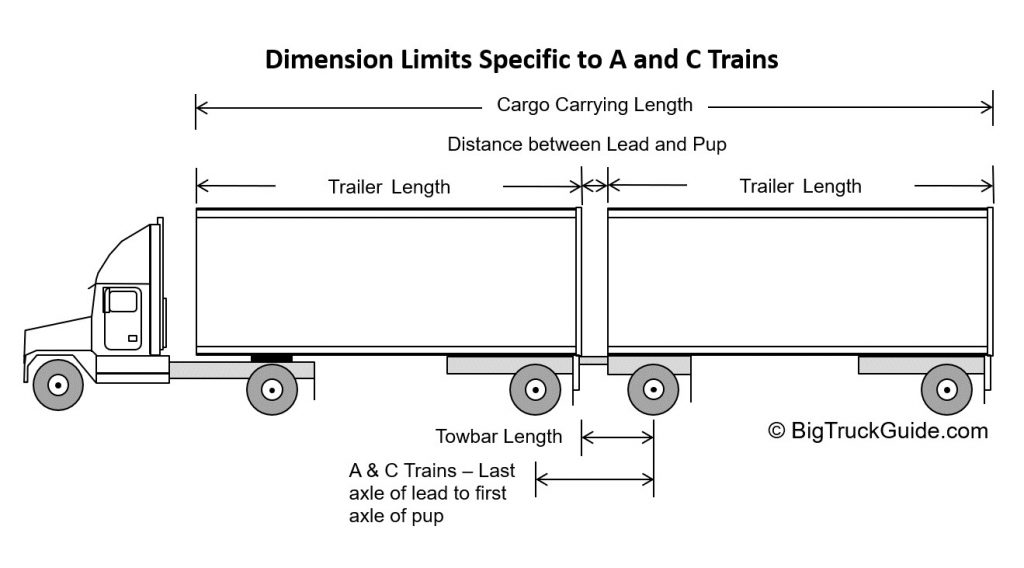
Dimensions specific to 4 axle trailers
The Canadian Province of Quebec has a specific restriction on the distance between the steer axle on a 4 axle trailer and the first axle of the tridem group.
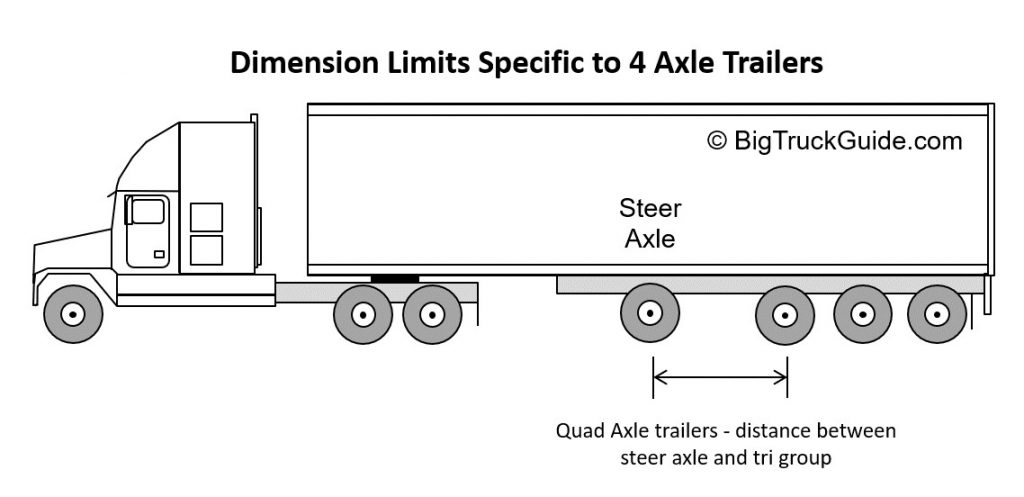

I was just searching for relevant on this topic and came across your blog post. You provided me with very useful information. Thank you so much!
Glad the information could help!
Thank you for sharing. This information is really helpful